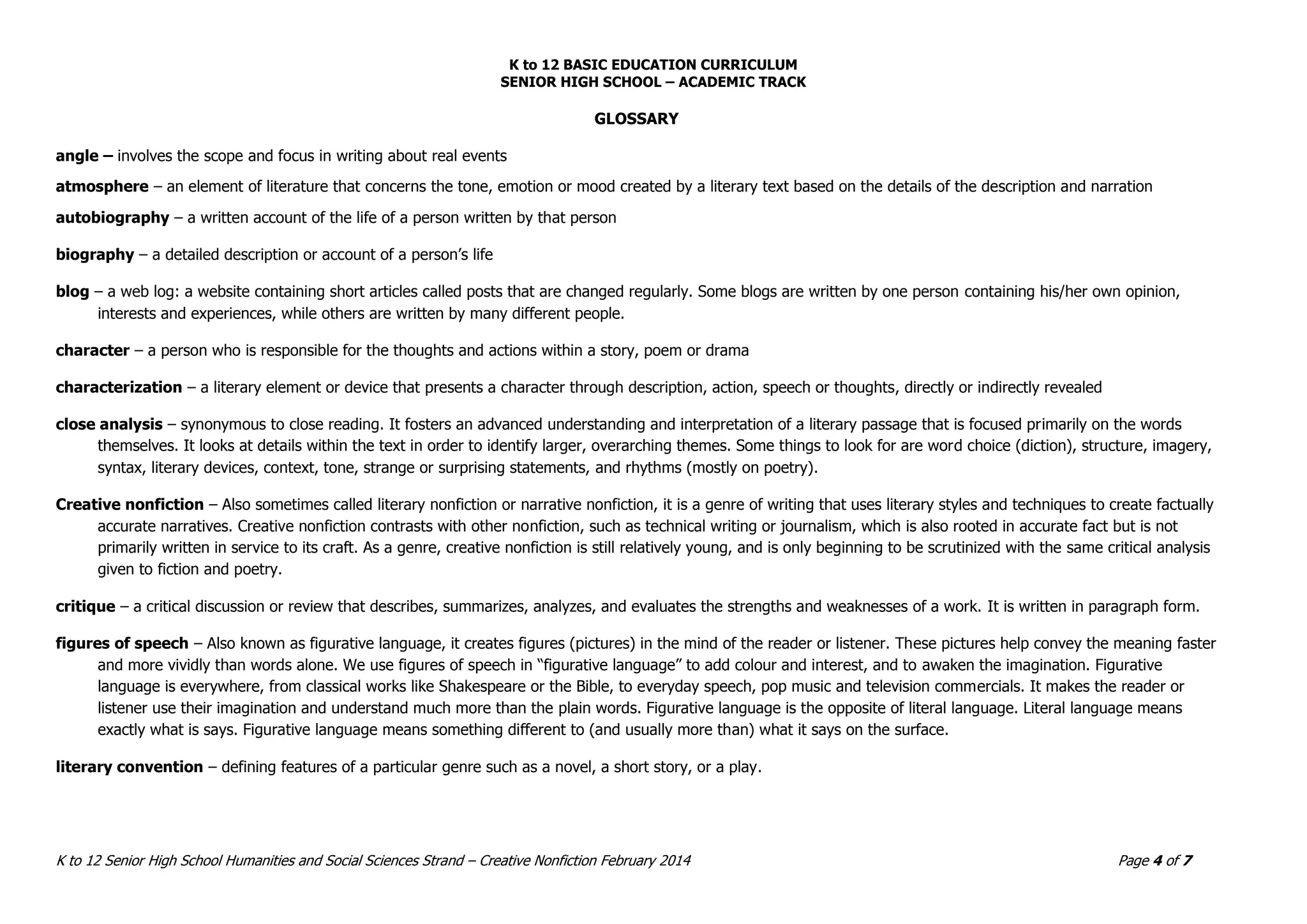This document outlines the curriculum for a Creative Nonfiction subject for senior high school students. It is an 80-hour course divided into 2 quarters. The first quarter focuses on introducing different literary genres and their elements. Students will analyze texts, write their own pieces using genre elements, and provide peer feedback. The second quarter covers various forms of creative nonfiction like autobiographies and blogs. Students will analyze and present on different forms, write critiques of peer works, and draft and revise their own creative nonfiction pieces based on real-life experiences. The goal is for students to understand and effectively utilize the techniques of the creative nonfiction genre.






